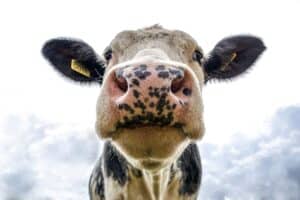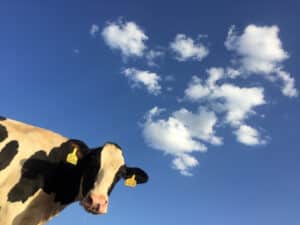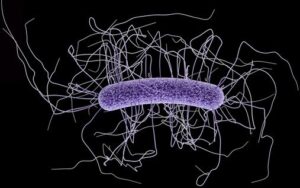We have received more calls about dead cows from HBS in the lately. Higher levels of ash coupled with mycotoxins and pathogens seem to be the common factor in these herds along with high levels of milk production.
Most of the northeast experienced one of the most challenging growing seasons from excess rainfall. Many farms have low dry matter hay and small grain silages. Some have a clostridial fermentation. We are also seeing higher levels of ash which will bring into play pathogens.
We encourage you to utilize the prepaid mailers to verify mycotoxin levels. Those of you that have used our free Risk Management Program, know how valuable NovinS is when fed at the correct level. NovinS feed rates go from 15 – 42 grams depending on test results. we can lower the feed rate when coupled with Hilyses. Hilyses is the perfect match with NovinS. Hilyses has over 26% B1,3 – 1,6 Glucans which are the best for binding mycotoxins and enhancing immune function. Hilyses has > 16% mannans with excellent pathogen binding. Hilyses also delivers 3 x the metabolites of the leading yeast culture. You can replace you existing yeast product for about the same cost and receive all benefits of the yeast cell walls.
Clostridia Challenges and Management Strategies
Bobbi Bailey, PhD Animal Nutrition Specialist, MarSyt
With the wet weather that occurred in many parts of the region this spring, making quality haylage was challenging. One of the most important factors for making high quality haylage is moisture. At a high moisture level (> 65 percent), there is an increased risk of butyric acid formation, which is indicative of clostridic fermentation. This improper fermentation leads to increased dry matter loss, excessive protein breakdown, an elevation in pH, rancid odors and poor performance with potential negative health impacts when fed to high-producing dairy cows. In addition to moisture, another important factor for making high quality haylage is contamination. Soil contamination accumulates indigestible ash and increases the potential for clostridia species. Clostridial bacteria are widespread in the environment (primarily in the soil) and are easily transferred to feedstuffs by any activity that incorporates dirt into the harvested crop. Clostridia then make their way into rations and ultimately, into cows. As manure is applied to fields, clostridia organisms are returned to the soil and the cycle continues.
While improved management strategies and bacterial silage inoculants can successfully control clostridia species that produce butyric acid in silage (e.g., butyricum, tyrobutyricum, sporogenes, etc.), other species can have negative impacts on gut health and efficiency thereby decreasing animal performance. Clostridium perfringens from contamination may also be present and can have significant effects on high-producing dairy cows. Clostridium perfringens type A has been linked to Hemorrhagic Bowel Syndrome (HBS). While this organism is quite abundant and generally considered to be innocuous, it can become problematic when animals are faced with stress or challenges or other circumstances that set up a favorable growth environment for bacteria to proliferate and produce potent toxins.
Reducing the risk of clostridial issues can be accomplished by instituting some preventative measures. First, harvest at proper moisture content and reduce soil contamination by raising the cutter bar and slowing mower speeds. Second, focus on nutritional management and maintaining gut health. The nutritional and health status of cattle are directly related to gut health which includes immune system, gut microbial balance and integrity of the gut. Digestion, absorption of nutrients, resistance to disease and immune system status are all affected by how healthy the gastrointestinal tract is.
Feed ingredients, such as Hilyses hydrolyzed yeast, which contains a full dosage of yeast culture, mannan oligosaccharides (MOS), free mannose sugar, and beta-glucans, are an important addition to the dairy cow diet for maintaining gut health and immune function. Aside from the yeast culture, which keeps the rumen healthy during times of stress, the presence of MOS in Hilyses acts as a prebiotic and helps maintain and balance healthy hind-gut microbes while free mannose helps to reduce bacterial pathogens like Salmonella, E. coli and Clostridia. The beta- glucans provided by Hilyses not only help lower the effects of any mycotoxin challenges present in the gut, but also help to stimulate the immune system in order to fight off disease.
Because of the large amount of feed animals consume each day, even low levels of clostridia per pound of feed quickly add up. When bacterial loads increase, animal production may decline and the risk for disease can increase. By practicing proper harvest and storage of forages and ensuring a healthy rumen microflora and immune system by feeding a hydrolyzed yeast such as Hilyses, you can reduce your risk of having clostridial issues.



